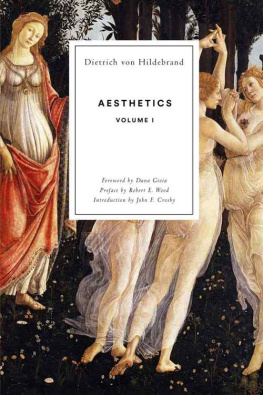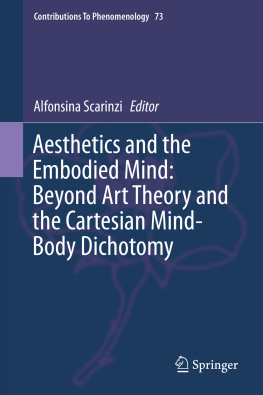
ECOCRITICAL AESTHETICS
ECOCRITICAL AESTHETICS
LANGUAGE,
BEAUTY, AND THE
ENVIRONMENT
EDITED BY PETER QUIGLEY AND SCOTT SLOVIC
INDIANA UNIVERSITY PRESS
This book is a publication of
Indiana University Press
Office of Scholarly Publishing
Herman B Wells Library 350
1320 East 10th Street
Bloomington, Indiana 47405 USA
iupress.indiana.edu
2018 by Indiana University Press
All rights reserved
No part of this book may be reproduced or utilized in any form or by any means, electronic or mechanical, including photocopying and recording, or by any information storage and retrieval system, without permission in writing from the publisher.
The paper used in this publication meets the minimum requirements of the American National Standard for Information SciencesPermanence of Paper for Printed Library Materials, ANSI Z39.481992.
Manufactured in the United States of America
Cataloging information is available from the Library of Congress.
ISBN 978-0-253-03210-2 (cloth)
ISBN 978-0-253-03212-6 (paperback)
ISBN 978-0-253-03211-9 (ebook)
1 2 3 4 5 23 22 21 20 19 18
CONTENTS
/ Peter Quigley
/ Tim Hunt
/ Arnold Berleant
/ Frank Stewart
/ Tyler Nickl
/ Mark Luccarelli
/ Greta Gaard
/ Janine DeBaise
/ Yuki Masami
/ ShaunAnne Tangney
/ Serpil Oppermann
/ Cynthia J. Miller
/ Werner Bigell
/ Scott Slovic
ACKNOWLEDGMENTS
THIS BOOK ORIGINATED with a panel titled No Beauty, No Peace: Robinson Jeffers and the Politics of Beauty and Justice, which I organized for the 2012 Western Literature Association conference in Lubbock, Texas. The panel was made up of old friends and longtime Jeffers scholars: David C. Morris, David Rothman, and ShaunAnne Tangney. We had a spirited discussion with the audience following the papers, emerging from the session with a shared concern that beauty is being eclipsed in contemporary critical discourse and specifically within the environmental humanities. The four of us from the panel had lunch that day with Barry Lopez and Scott Slovic, and Barry and Scott immediately recognized that our ideas could form the basis of a meaningful book project. Back home in Hawaii, I received important support from my doctoral student Eric San George and my colleague Frank Stewart, both of whom have helped me plan this project and offered encouragement and advice during the four years its taken to bring it to fruition.
In acknowledging those who have contributed in major ways to this volume, thanks must first go to all of the contributors to the collection. I appreciate their excellent scholarship, their patience during the editorial and publishing process, and their speedy and careful revisions of their initial manuscripts. I also wish to thank Scott Slovic for his collaborative, informed, friendly, and eclectic approach to the many voices that constitute this volume. Frankly, with his hectic travels all over the world to speak and teach, while holding down teaching and administrative duties in Idaho, I was amazed at his ability to apply studious attention to the editorial details of this project and help propel us toward publication.
Peter Quigley
University of Hawaii,
Manoa
I HAVE NEVER been blind to the beauty of the literary works Ive studied for the past several decades as an ecocritic, but until Peter Quigley and company beckoned Barry and me over to their table in Lubbock, aesthetics had always seemed a somewhat secondary or tertiary dimension of my scholarly preoccupations. Working on this project with Peter has driven home the meaning, the importance, of beauty in all of my workit will never recede into the background again. I thank Peter for his intensity and enthusiasm, his commitment to the causeour collaboration has been an exciting one.
Peter and I both appreciate the support of the staff at Indiana University Press and the excellent feedback from our anonymous reviewers. This project has benefited greatly from their contributions.
There is so much to worry about as we consider the prognosis for environmental protection and social justice in the coming yearsbut there is also much to celebrate. This book is a celebration of cultural engagement with the natural world, and it is also a recognition of how beauty in nature and beauty in human artifacts can inspire attention and activism.
Scott Slovic
University of Idaho
PERMISSIONS
WILLIAM STAFFORD, Maybe Alone on My Bike, Smokes Way: Poems from Limited Editions, 19681981. Originally published in the New Yorker, April 4, 1964. Copyright 1964 by William Stafford. Reprinted with the permission of The Permissions Company, Inc., on behalf of Graywolf Press, www.graywolfpress.org.
Ofelia Zepeda, B o e-a:g ma ab him g ju:k / It Is Going to Rain. Reprinted with the permission of Ofelia Zepeda.
ECOCRITICAL AESTHETICS
INTRODUCTION
PETER QUIGLEY
IN 1996, AT THE DAWN of the contemporary ecocritical enterprise, Sven Birkerts published a review of The Ecocriticism Reader in the Boston Book Review. It captured the freshness of this new field, the sense of new possibilities as well as the likelihood of some competitive elbowing: Here is yet another new frontier; a land-rush is underway; critics and thinkers are staking out their fields, their terrain. There is a bit of that excitement of origins that is found when options are still open, before the power brokers have muscled the first orthodoxies into place. Something important has been lost, however, in the inevitable jostling and elbowing that has taken place during the past two decades: a concern for beauty.
Where has interest in the study of beauty gone in ecocritical studies and in critical theory as a whole? One of the reasons Scott Slovic and I collaborated on this project was that we both agreed that, as Scott put it to me in an e-mail, the beauty of nature and the beautiful renderings of environmental ideas and experience in various media of cultural expression, both of which were among the essential motivations for those who worked to establish ecocriticism as a self-aware scholarly movement in the 1980s and 90s, quickly became subsumed among many other scholarly concerns (Latest). As a numerical indicator of this, I found that the ASLE Online Bibliography 20002010 contains twenty-seven references to justice in titles and ninety-four appearances of the word justice in the abstracts. For beauty, however, there were only six appearances in titles and twenty-four in the abstracts. Aesthetics turns up three times in titles. I strongly suspect that the upward arc for social justice in titles and abstracts has steepened since 2010 and that the mention of beauty or aesthetics has diminished. Similarly, Slovic reported that in June 2015, the Association for the Study of Literature and Environment (ASLE) hosted at the University of Idaho what may well have been the worlds largest gathering of ecocritics to date. Some 900 scholars and writers from thirty countries gathered to talk about literature and the arts in relation to such topics as fracking, global climate change, animal subjectivity, environmental justice, queer ecologies, narrative ethics, acoustic ecologies, humor, the body, activist pedagogy, and many other ideas. Amid the throng, aesthetics was almost nowhere to be found. Only four papers mentioned aesthetics in their titles.
In our correspondence on this issue, Scott wrote that he considers aesthetics to be one of the elephants in the room at eco-conferences, something folks are aware of, thinking about, but for some reason hesitant to engage with: Scholars hesitate to invoke beauty as an intellectual mechanism for gaining traction on these [environmental] problems. Beauty often feels so private, so complacent, even decadent. I think hes right; I do, of course, think people still experience and think about beauty, but they feel restricted and prohibited due to the options our current critical methodologies allow. In our back-and-forth, I have tended to say that these limiting options have been politically strategic in design, that this erasure of beauty is purposeful, intentional, and not inadvertent. If aesthetics is mentioned at all, it is reduced to a form of social semiotics in a war of position against All Bad Things (Brub 67). Such reductionist treatment diminishes and contorts our lived experience and our intellectual life. Like the seat in the very last row of the airplane, the window has intentionally been removed; I cant see, and it feels odd.
Next page













